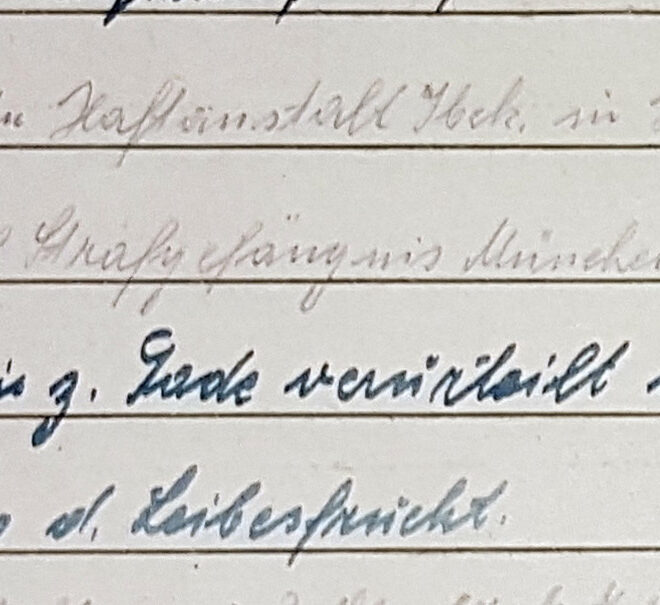Franziska Schwings-
hackl
On January 27, 2024, this
Zeitpunkt was installed near the address Universitätsstrasse 21. The initiative for this came from erinnern:at.
Franziska Schwingshackl, née Oberwurzer, widow of Mayr
Born 26.1.1878 in Assling
Died 9.3.1944 in München-
Stadelheim
Franziska Schwingshackl had already spent two months in prison in 1924 for “aborting the fruit of the womb”, and in 1930 she was sentenced to nine months because the pregnant woman had died during the intervention. She was accused of having performed more than 20 abortions after the National Socialists came to power, “for which she was well paid. Self-interest was thus the driving force behind her deeds,” according to a report in the Innsbrucker Nachrichten. In doing so, she violated “the interests of the community and the preservation of the strength of the nation”. Schwingshackl was accordingly charged with contravening the “Regulation for the Protection of Marriage, Family and Maternity”. The newspaper argued that there was no longer a need for abortions in the German Reich because of the support provided by the institutions of the National Socialist People’s Welfare Organisation (NSV) and continued:
“The protection of unborn life and the avoidance of the risks to the health of the mother that an abortion always entails are accordingly National Socialist imperatives that must be rigorously enforced. The Innsbruck Special Court before which Schwingshackl was tried took these principles fully into account and sentenced the accused to death as a dangerous habitual criminal.”
Franziska Schwingshackl was executed in München-Stadelheim prison on 9 March 1944.
However, the Innsbruck Special Court was subsequently subjected to criticism – from a formal point of view. The Reich Ministry of Justice complained of the failure to make an “overall assessment of the offender personality” and said that a chronological list of previous convictions and reference to “healthy popular sentiment” were not sufficient. The death penalty had to be imposed if there was a need for protection or atonement, and this had to be reasoned by the court. “In the Schwingshackl judgement, this legal provision is not even mentioned.”
Sources:
Achrainer, Martin: Die Aufgabe der Justiz. Nationalsozialismus und Justiz in Österreich 1938 bis 1945 anhand der Akten des Oberlandesgerichts Innsbruck, politikwissenschaftliche Diplomarbeit, Innsbruck 2001, p. 140.
Innsbrucker Nachrichten, 21.1.1944, p. 3.
List of names of victims of the Nazi dictatorship in East Tyrol for the Book of Victims at the Lienz Memorial to the Victims of National Socialism (scientific lead Martin Kofler)
